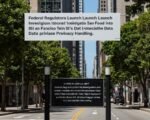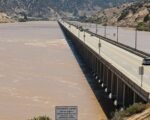California State Parks Implement Major Changes: Early Impacts and Mixed Reactions Emerge
SACRAMENTO, CA – A significant shift in how visitors access and pay for entry to California’s treasured state parks took effect on April 15, marking the implementation of a new fee structure and an updated reservation system. The changes, long planned by California State Parks officials, are part of a broader effort to address critical infrastructure needs and manage escalating visitor numbers at popular destinations. However, early analysis following the first week indicates a varied impact across the system, with notable shifts in visitor behavior and mixed feedback from the public and stakeholders.
Rationale Behind the Policy Shift
The primary impetus behind the revised fee structure and reservation system is the pressing need to secure sustainable funding for the state park system. California State Parks faces a substantial $1.5 billion maintenance backlog across its diverse properties, encompassing everything from trail repairs and facility upgrades to essential infrastructure maintenance. Officials emphasize that updated fee revenues are crucial to begin tackling this considerable deficit, ensuring the long-term health and accessibility of the parks for future generations. Coupled with funding needs, the changes are also designed to manage overcrowding. High visitation rates at iconic locations, particularly during peak hours and on weekends, have led to congestion, resource strain, and a diminished visitor experience. The new reservation system is intended to distribute visitor load more evenly and provide park managers with better tools to regulate access and protect sensitive natural resources.
Initial Observations on Visitor Patterns
Preliminary data emerging from the first week post-implementation reveals discernible changes in how visitors are accessing parks. Reports from several popular locations, including Pfeiffer Big Sur State Park and numerous other parks situated along the picturesque California coast, indicate a notable decrease in last-minute, spontaneous day-use visitors, particularly during traditional peak hours. While this trend potentially aligns with the state’s goal of mitigating overcrowding at specific times, it also highlights a shift away from the more flexible access previously available at many sites.
Mixed Feedback from the Ground
The introduction of the new system has not been met with universal acclaim. Local tourism associations, key liaisons between the parks, businesses, and the visiting public, report receiving mixed feedback. This reaction stems from potential visitors attempting to plan trips under the new rules and from businesses in communities surrounding the parks that rely on tourism traffic. While some visitors may find the reservation system allows for better trip planning and guarantees entry, others express frustration with perceived increased costs, complexity in the booking process, or the reduced ability for spontaneous visits. Businesses voice concerns about potential impacts on foot traffic and visitor spending if access patterns change significantly.
Early Trends in Reservation Data
Specific data points from the first week also provide insight into how the reservation component is performing. Analysis of reservation numbers for some premium weekend slots, traditionally the most sought-after access periods, suggests figures appear slightly down when compared to reservation levels for equivalent weekends in previous years under the prior system. This initial trend, while requiring further study over a longer period, has become a point of discussion among park officials and tourism stakeholders, prompting questions about visitor adaptation and potential barriers to booking.
Challenges and Path Forward
The blend of achieving necessary funding and management goals while maintaining accessibility and positive visitor and community relations presents a complex challenge. The $1.5 billion maintenance backlog underscores the critical need for increased revenue, but the early feedback indicates that the method of achieving this has generated friction for some. Discussions are now underway among California State Parks leadership and potentially with external partners to evaluate the initial impacts thoroughly. These ongoing conversations are exploring the possibility of potential adjustments to the new fee structure or the reservation system based on the observed data and the feedback received. The aim is likely to fine-tune the implementation to better balance the park system’s financial and environmental needs with the desire for public access and positive economic impacts on surrounding communities.
Conclusion
The first week following the April 15 implementation of California State Parks’ new fee structure and reservation system reveals a landscape of intended outcomes beginning to take shape alongside challenges indicated by stakeholder feedback and early data. The system is achieving some degree of change in visitor patterns, particularly at high-traffic locations like Pfeiffer Big Sur State Park and along the coast, aligning with efforts to manage overcrowding. Simultaneously, the mixed feedback and slightly lower premium weekend reservation numbers compared to previous years highlight areas requiring attention and potential modification. With the critical need to address the $1.5 billion maintenance backlog remaining paramount, the focus for California State Parks moving forward will be on evaluating these initial impacts comprehensively and considering potential adjustments to ensure the long-term sustainability and public enjoyment of the state’s invaluable park resources.



















